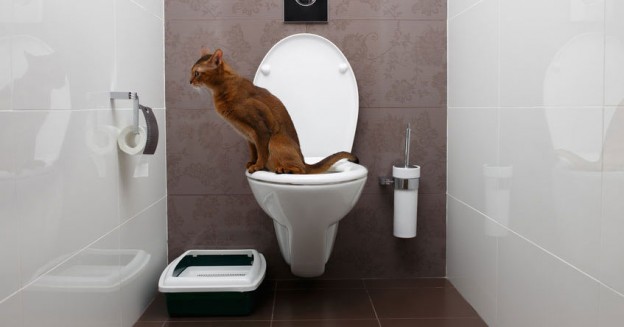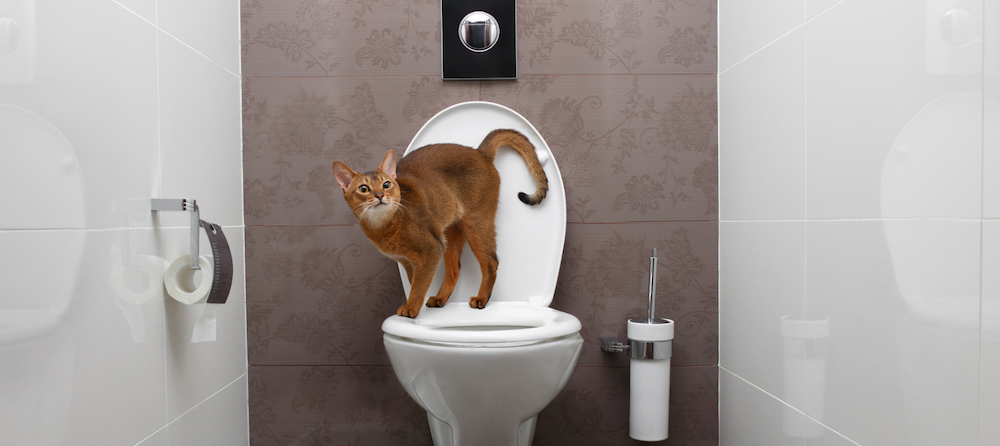Prevent Plumbing Problems: Don't Flush Cat Poop Down Your Toilet - Expert Advice
Prevent Plumbing Problems: Don't Flush Cat Poop Down Your Toilet - Expert Advice
Blog Article
Here in the next paragraph you can locate lots of good information and facts in relation to How to Dispose of Cat Poop and Litter Without Plastic Bags.

Introduction
As pet cat owners, it's important to bear in mind how we throw away our feline friends' waste. While it may seem hassle-free to purge cat poop down the bathroom, this method can have damaging effects for both the setting and human health.
Alternatives to Flushing
Thankfully, there are much safer and more accountable ways to take care of pet cat poop. Take into consideration the following alternatives:
1. Scoop and Dispose in Trash
The most typical technique of disposing of cat poop is to scoop it into a naturally degradable bag and toss it in the garbage. Make certain to make use of a dedicated clutter inside story and dispose of the waste promptly.
2. Use Biodegradable Litter
Opt for naturally degradable feline trash made from materials such as corn or wheat. These litters are environmentally friendly and can be safely gotten rid of in the trash.
3. Bury in the Yard
If you have a yard, consider burying pet cat waste in a marked location away from vegetable gardens and water resources. Make certain to dig deep sufficient to avoid contamination of groundwater.
4. Set Up a Pet Waste Disposal System
Purchase a pet garbage disposal system especially created for feline waste. These systems use enzymes to break down the waste, decreasing odor and ecological effect.
Health Risks
Along with ecological worries, flushing cat waste can likewise present health dangers to humans. Cat feces may contain Toxoplasma gondii, a bloodsucker that can trigger toxoplasmosis-- a potentially extreme ailment, especially for expectant ladies and individuals with weakened body immune systems.
Environmental Impact
Flushing feline poop introduces harmful virus and parasites into the water, presenting a significant threat to water environments. These contaminants can adversely impact aquatic life and compromise water top quality.
Final thought
Liable family pet ownership prolongs past supplying food and shelter-- it likewise involves appropriate waste management. By avoiding flushing feline poop down the toilet and choosing different disposal methods, we can lessen our environmental impact and secure human health.
Why Can’t I Flush Cat Poop?
It Spreads a Parasite
Cats are frequently infected with a parasite called toxoplasma gondii. The parasite causes an infection called toxoplasmosis. It is usually harmless to cats. The parasite only uses cat poop as a host for its eggs. Otherwise, the cat’s immune system usually keeps the infection at low enough levels to maintain its own health. But it does not stop the develop of eggs. These eggs are tiny and surprisingly tough. They may survive for a year before they begin to grow. But that’s the problem.
Our wastewater system is not designed to deal with toxoplasmosis eggs. Instead, most eggs will flush from your toilet into sewers and wastewater management plants. After the sewage is treated for many other harmful things in it, it is typically released into local rivers, lakes, or oceans. Here, the toxoplasmosis eggs can find new hosts, including starfish, crabs, otters, and many other wildlife. For many, this is a significant risk to their health. Toxoplasmosis can also end up infecting water sources that are important for agriculture, which means our deer, pigs, and sheep can get infected too.
Is There Risk to Humans?
There can be a risk to human life from flushing cat poop down the toilet. If you do so, the parasites from your cat’s poop can end up in shellfish, game animals, or livestock. If this meat is then served raw or undercooked, the people who eat it can get sick.
In fact, according to the CDC, 40 million people in the United States are infected with toxoplasma gondii. They get it from exposure to infected seafood, or from some kind of cat poop contamination, like drinking from a stream that is contaminated or touching anything that has come into contact with cat poop. That includes just cleaning a cat litter box.
Most people who get infected with these parasites will not develop any symptoms. However, for pregnant women or for those with compromised immune systems, the parasite can cause severe health problems.
How to Handle Cat Poop
The best way to handle cat poop is actually to clean the box more often. The eggs that the parasite sheds will not become active until one to five days after the cat poops. That means that if you clean daily, you’re much less likely to come into direct contact with infectious eggs.
That said, always dispose of cat poop in the garbage and not down the toilet. Wash your hands before and after you clean the litter box, and bring the bag of poop right outside to your garbage bins.
https://trenchlesssolutionsusa.com/why-cant-i-flush-cat-poop/

As a reader about How to Dispose of Cat Poop and Litter Without Plastic Bags, I assumed sharing that segment was important. Appreciated our write up? Please share it. Help someone else locate it. Many thanks for going through it.
Schedule Appointment Now Report this page